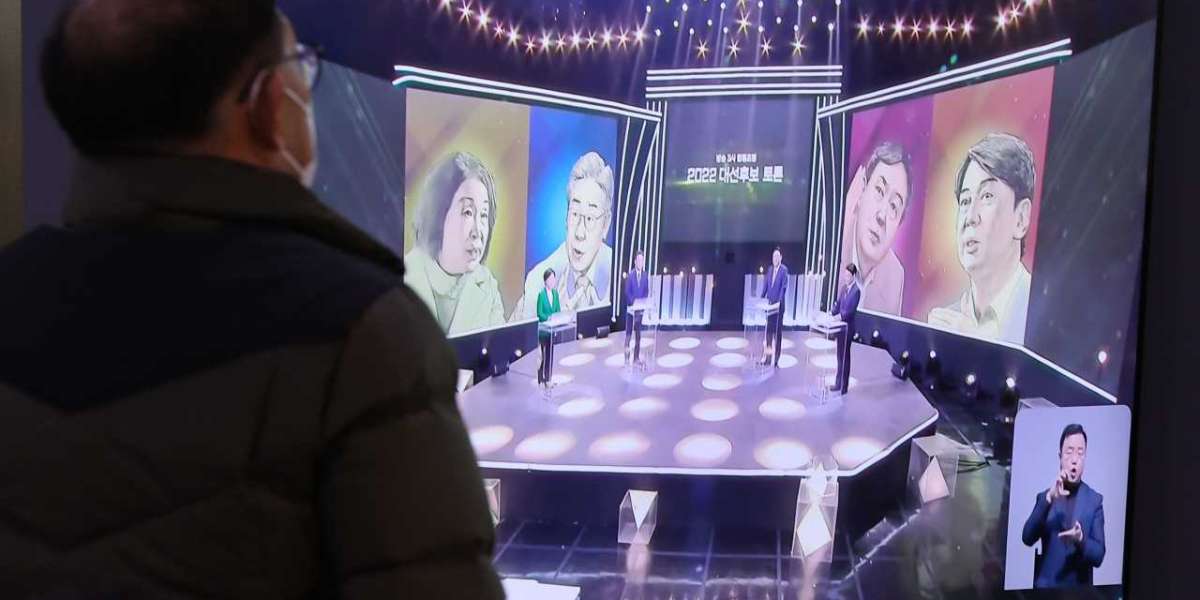In a two-hour televised debate broadcast on Thursday, South Korea's two major presidential contenders battled over proposals to strengthen national missile defense against North Korea, while also demonstrating divergence in their approaches to the United States and China.
As a result, the first public discussion on foreign and security policy among the four presidential contenders was noticeably focused on how to improve missile defense, which has been challenged by North Korea's quickly developing missile and nuclear capabilities.
Nine ballistic missiles and two land-attack cruise missiles (LACM) were launched by North Korea in seven separate missions between January 5 and January 30.
Recent launches of missiles, such as the KN-23, KN-24, and Maneuverable Reentry Vehicle (MaRV), have significantly improved survivability and maneuverability compared to previous launches. It is believed by analysts that the newly built missiles are capable of penetrating and incapacitating South Korean, American, and allied missile defense systems.
The People Power Party's presidential candidate Yoon Suk-yeol and the ruling Democratic Party of Korea's presidential nominee Lee Jae-Myung, however, differed in their approaches to building and upgrading missile defense systems to counter North Korea's escalating missile and nuclear threats.
THAAD deployment, according to Yoon
In a statement, Yoon expressed his support for the notion of installing additional Terminal High Altitude Area Defense (THAAD) batteries, which utilize hit-to-kill technology to intercept incoming ballistic missiles at altitudes ranging from 40 to 150 kilometers.
In his speech, Yoon underlined that the THAAD system is essential for destroying ballistic missiles that are launched into the Seoul metropolitan region with a lofted and high-angle trajectory.
Because of the high likelihood that North Korea will fire missiles at a high angle while targeting the urban region, "(the THAAD system) must be installed in the metropolitan area," Yoon explained.
Then Yoon went on to remark that choosing a location for expanded deployment required military consideration, and as a result, the topic might be revisited in the future.
The presidential candidate also emphasized the importance of the THAAD system as a component of South Korea's "multilayered" missile defense system, which he described as "complex."
Yoon has pledged to expedite the establishment and completion of the indigenous three-axis missile defense system, which initially comprised of the Kill Chain, the Korea Air and Missile Defense (KAMD), and the Korea Massive Punishment and Retaliation System (KMPRS), among other components (KMPR).
The Moon Jae-in government, on the other hand, has dubbed the triad the "Nuclear-WMD Response System" and combined the Kill Chain and the Korean Missile Defense System into a "strategic strike system."
Lee: L-SAM development carried out in-house
A counter-argument was put out by Lee, who offered a strategy to accelerate the construction of indigenous long-range surface to air missile (L-SAM) systems, which are capable of destroying ballistic missiles at altitudes of 40 kilometers or higher.
Lee emphasized the importance of advancing the domestic missile defense system rather than obtaining THAAD batteries from the United States, explaining that Seoul wants to finish the development of L-SAM in two or three years rather than purchasing THAAD batteries from the United States.
South Korea's own technology and capabilities, Lee believes, will be adequate to construct a defensive system. He expressed fear about Chinese retaliation should the THAAD system be expanded further.
In response, Yoon pointed out that the deployment of L-SAM, which is still in the early stages of development, would require a significant amount of time.
Lee also emphasized the need of developing a nuclear-powered submarine on one's own. Accordingly, Lee stated that he will attempt to change the nuclear cooperation agreement in order to allow South Korea to obtain the necessary technologies.
The 'Three Noes' of the Moon Jae-in government
But, perhaps more crucially, the disagreement between Lee and Yoon in terms of selecting a kill vehicle originates from their divergent perspectives on the South Korea-United States relationship as well as China policy.
When it comes to China's economic cooperation, Lee believes the administration of President Moon Jae-in has adopted a "reasonable" strategy with its "Three Noes."
South Korea, following a diplomatic spat over the THAAD deployment, promised Beijing in 2017 that the country would not deploy any additional THAAD batteries, integrate into the US-led regional missile defense system, or participate in trilateral military cooperation between South Korea, the United States, and Japan.
Because of South Korea's strong reliance on trade, Lee stressed that the country should continue to create a "strategic cooperative partnership" with China.
In his remarks, Lee emphasized the need of maintaining a cordial relationship as much as possible because "we should not and cannot pull out of economic cooperation." He cited the importance of averting the economic losses that had previously resulted from the THAAD deployment.
"You are taking advantage of anti-China sentiment in South Korea," Lee said, claiming that Yoon was pursuing "political benefits."
The relationship between South Korea and the United States vs the balancing act
During the television discussion, Lee acknowledged the necessity and relevance of enhancing the South Korea-US security alliance and upgrading it to a "comprehensive alliance," as agreed upon by South Korean President Moon Jae-in and US President Joe Biden earlier this year.
Lee, on the other hand, has stated that he will preserve the Moon Jae-in government's delicate balancing act between Beijing and the United States.
Upon being asked by a moderator to select one leader from among those of the United States, China, Japan, and North Korea with whom he would meet first if being elected president, Lee declined to respond.
Efficacy and utility of a meeting would be taken into consideration, according to Lee, who emphasized the need for "balanced" and "realistic diplomacy oriented on national interests."
In answer to the same issue, Yoon stated that he will first meet with Vice President Biden of the United States.
Afterward, Yoon stated that he will convene separate talks with the Japanese Prime Minister, Fumio Kishida, Chinese President Xi Jinping, and North Korean leader, Kim Jong-un, in that order.
In his remarks to Yoon, the Moon Jae-in government was criticized for its tendency toward China and North Korea. "In my perspective, the goal is to re-establish the relationship with the United States and Japan, which has been fragmented... throughout the era of the Democratic Party's rule," Yoon stated.
As part of his vow to "further deepen the South Korea-US alliance and fortify the (US) extended deterrent," Yoon reaffirmed his support for the United States.
Extended deterrence refers to the United States' resolve to deter or respond to enemy coercion, as well as nuclear and non-nuclear military strikes on US allies and partners, in addition to conventional military threats. The nuclear umbrella provided by the United States is one of the mechanisms through which the country seeks to establish extended deterrence.
Yoon also ruled out the holding of nuclear weapons as well as the use of NATO's nuclear-sharing system, arguing that both alternatives would be in violation of the Nuclear Non-Proliferation Treaty and would complicate nuclear discussions with Pyongyang, respectively.
Instead, the candidate explained, "acknowledging North Korea's existence of nuclear weapons" and moving the discussion focus away from denuclearization and toward nuclear disarmament will be the outcomes of the possibilities.


